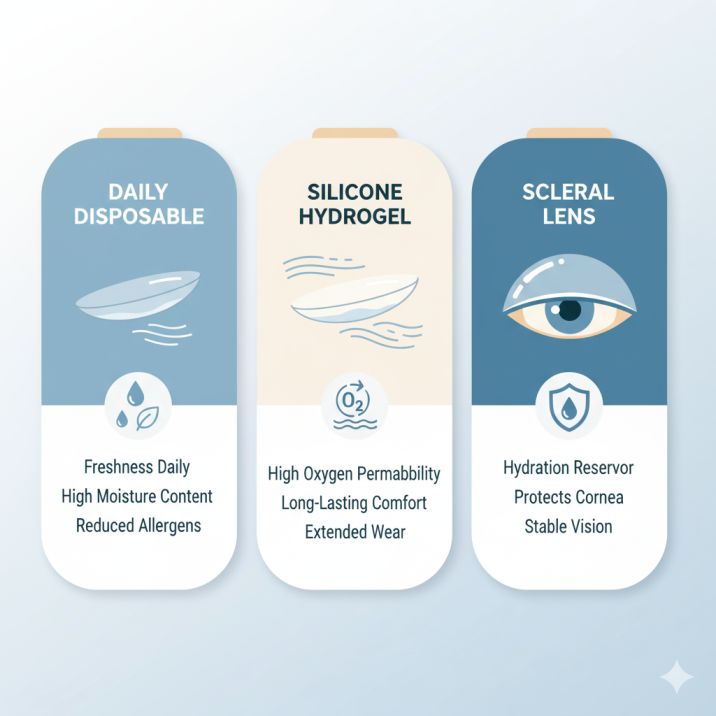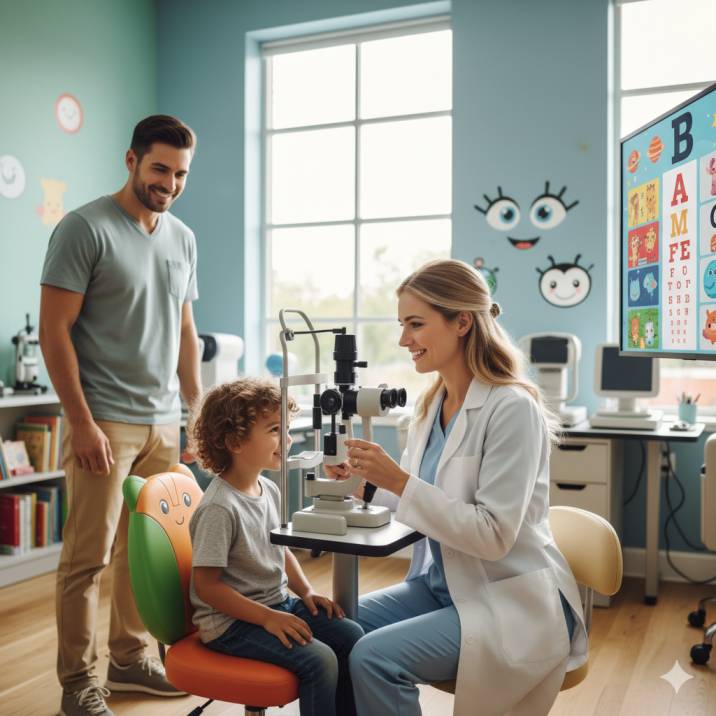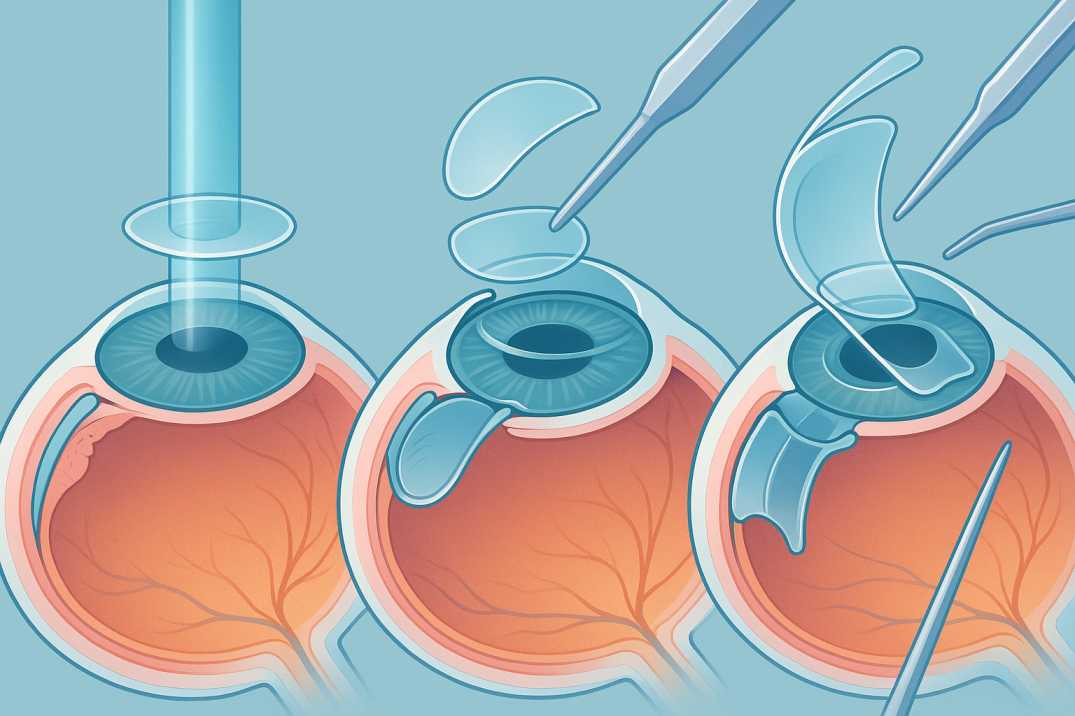Contacts for Dry Eyes: Solutions That Actually Work
Introduction
If you’ve ever removed your contacts for dry eyes after just a few hours because of that gritty, uncomfortable feeling, you’re not alone. Studies show that between 30% to 60% of contact lens wearers experience eye dryness from contacts, and many worry they’ll have to give up contacts altogether. But here’s the encouraging news: you can absolutely wear contact lenses with dry eyes when you choose the right approach.
At Cannon EyeCare, we’ve helped thousands of Seattle-area patients find comfortable contact lens solutions, even when dealing with chronic dryness. Through our comprehensive approach combining advanced diagnostic technology with personalized care, we’ll help you understand exactly what options work best for your unique situation.
Bottom Line Up Front: Modern contact lens technology offers multiple solutions for dry eye sufferers, from specialized daily disposables to innovative scleral lenses. The key is proper diagnosis, the right lens selection, and ongoing professional care.
Understanding Dry Eyes and Contact Lens Interaction
What Causes Dry Eyes?
Dry eye syndrome occurs when your eyes don’t produce enough quality tears or when tears evaporate too quickly. Dry eye disease affects at least 16 million Americans, with some estimates pushing undiagnosed cases to 30 million or even 49 million, making it one of the most common eye conditions.
Primary causes include:
- Environmental factors (air conditioning, wind, low humidity)
- Prolonged screen time and reduced blinking
- Hormonal changes and aging
- Certain medications
- Underlying health conditions
- Previous contact lens wear
How Contact Lenses Affect Dry Eyes
Contact lenses can increase your risk of dry eyes, especially as you get older or wear the same pair for long periods. Here’s why:
Oxygen Flow Reduction: Contact lenses may block oxygen from getting to your eyes, causing mild corneal edema and irritation
Moisture Absorption: To keep themselves hydrated, contact lenses may absorb moisture from your eyes, leaving both your eyes and lenses feeling dry
Protein Buildup: Debris and proteins can build up on contact lenses, making tears less effective in hydrating the lens and causing lid irritation
Increased Friction: Contact lenses can interfere with the moisture level in the eyes, increasing friction between both the lenses and your eyes and the lenses and your eyelids
The Science Behind Contact Lenses for Dry Eyes
Recent Research Findings
Modern eye care has made significant advances in understanding and treating contact lens-related dry eye. A 2023 study published in Scientific Reports investigated large-diameter multifocal contact lenses and found that while there seemed to be a declining trend for some tear film metrics during lens wear, the measured values remained within normal ranges.
A 2024 study found that switching symptomatic soft-lens wearers to scleral lenses improved comfort and reduced dryness symptoms after 1 month of wear, with 45% of subjects requesting to continue wearing scleral lenses.
Understanding Tear Film Stability
Research shows that approximately 30% of the 140 million people who wear contact lenses worldwide discontinue use due to dryness and eye discomfort. People who wear contacts are four times more likely to develop dry eye disease than those who do not.
Best Contact Lens Options for Dry Eyes
Daily Disposable Lenses: The Gold Standard
According to Dr. Molly King, OD FAAO, “The best contact for patients with dry eye is a daily disposable lens. This eliminates the need for contact lens solutions and preservatives, and prevents protein build-up on the lenses”.
Why dailies work better:
- Fresh, sterile lens every day
- No protein or lipid buildup
- Daily disposable lenses reduce the risk of deposit buildup and minimize dryness caused by lens materials absorbing moisture from the eyes
- Convenient for intermittent wear
Top daily lens recommendations:
- ACUVUE OASYS 1-Day with HydraLuxe Technology: HydraLuxe Technology lets your tears hydrate the lens as well as your eye, helping keep them moist all day
- Dailies Total1: These lenses feature water gradient technology, which means their surface holds nearly 100% water content
- Precision1: Uses SMARTSURFACE Technology, a microthin moisture layer that keeps the lens surface consistently hydrated
Silicone Hydrogel Technology
Silicone hydrogel lenses are the most breathable amongst soft contact lenses and are often prescribed to wearers who suffer from dry eye syndrome. These advanced materials allow more oxygen to reach your cornea while maintaining moisture.
Key benefits:
- Higher oxygen permeability
- Lower water content (reducing moisture absorption from your eyes)
- Better deposit resistance
- All-day comfort
Specialty Lenses for Severe Dry Eye
Scleral Lenses: Scleral lenses are larger in size and rest on the sclera (the white part of your eye) rather than the cornea. The space between the lens and the cornea is filled with a fluid reservoir that helps to keep your eyes hydrated throughout the day.
Hybrid Lenses: Hybrid contact lenses contain 2 different materials in one lens: a rigid gas permeable (RGP) center and a soft outer ring, providing better oxygen flow while offering comfort through the soft outer ring.
Expert Tips for Comfortable Contact Lens Wear
Proper Lens Care and Hygiene
Daily Maintenance:
- Always wash and dry your hands before handling lenses
- Use fresh solution daily—never reuse or top off old solution
- Replace your contact lens case every 3 months and keep it clean by rinsing it with contact solution
- Follow your prescribed replacement schedule exactly
Environmental Considerations
- Follow the 20-20-20 rule: every 20 minutes, shift your focus to an object 20 feet away for at least 20 seconds
- Use a humidifier in dry environments
- Position yourself away from direct air conditioning or heating vents
Rewetting Drop Strategy
Use artificial tears or other lubricating eye drops before wearing contact lenses and occasionally while wearing lenses to help keep your eyes moisturized. Choose preservative-free options when possible.
Recommended timing:
- Before inserting lenses
- Mid-day refresher
- Before removing lenses
- As needed throughout wear time
When to Seek Professional Help
Red Flag Symptoms
Contact your eye care professional immediately if you experience:
- Severe eye pain or sudden vision changes
- Persistent redness that doesn’t improve after lens removal
- Discharge or unusual tearing
- Sensitivity to light
- Feeling like something is stuck in your eye
The Cannon EyeCare Difference
Our comprehensive approach includes:
- Advanced Diagnostic Technology: State-of-the-art retinal photography and diagnostic equipment to assess your tear film quality
- Personalized Fitting Process: Thorough evaluation of your specific dry eye condition and lifestyle needs
- Ongoing Support: Regular follow-ups to ensure continued comfort and eye health
- Education-Focused Care: Detailed explanations of your condition and treatment options in understandable terms
Lifestyle Modifications for Better Comfort
Nutritional Support
Omega-3 Fatty Acids: Eat more Omega-3 fatty acids (found in salmon, flaxseed, walnuts) as these practices help reduce inflammation and support tear film health in the long term.
Hydration and General Health
- Maintain adequate daily water intake
- Consider using a humidifier, especially during the winter months
- Protect your eyes from wind and UV exposure with quality sunglasses
- Take regular breaks from digital devices
Sleep and Eye Health
Quality sleep is essential for healthy tear production. Create a comfortable sleep environment and maintain consistent sleep schedules to support overall eye health.
Treatment Options Beyond Contact Lenses
Professional Dry Eye Treatments
Advanced Therapies Available:
- OptiLight IPL Treatment: A cutting-edge treatment designed to improve tear stability and reduce inflammation
- Prescription Medications: Eye drops or medications that treat the underlying causes of dry eyes
- Punctal Plugs: Tiny devices that help retain natural tears
- Warm Compress Therapy: Professional-grade treatments for meibomian gland dysfunction
Combination Approaches
The most effective treatment often combines multiple strategies:
- Appropriate contact lens selection
- Environmental modifications
- Nutritional support
- Professional dry eye treatments
- Regular monitoring and adjustments
The Path Forward: Your Next Steps
Schedule a Comprehensive Evaluation
Ready to find the best contact lenses for dry eyes? The journey to comfortable contact lens wear with dry eyes starts with proper diagnosis. At Cannon EyeCare, we provide:
- Detailed Dry Eye Assessment: Using advanced diagnostic equipment to evaluate your tear film quality and quantity
- Specialized Contact Lens Fitting: Trying multiple lens types to find your optimal solution for contacts for dry eyes
- Personalized Treatment Plan: Combining lens selection with appropriate dry eye treatments
- Ongoing Support: Regular follow-ups to ensure continued comfort and eye health
What to Expect During Your Visit
Comprehensive Testing: We’ll assess your tear production, evaluate your blink pattern, and examine your eyelids and corneal health to determine the root cause of your eye dryness from contacts.
Technology-Driven Diagnosis: Our state-of-the-art equipment provides detailed imaging of your tear film and ocular surface, helping us select the ideal daily disposable contacts or specialty lenses for your needs.
Educational Approach: We believe in empowering our patients with knowledge. You’ll leave understanding your condition and feeling confident about your treatment plan.
Contact Cannon EyeCare Today
📍 University Village Location: Convenient scheduling with free parking
- Comprehensive dry eye evaluations
- Advanced contact lens fittings
- Same-day appointments available
📍 Pike Place Market Location: Easy access in the heart of Seattle
- Expert dry eye contact lens consultations
- State-of-the-art diagnostic technology
- Evening appointments available
📞 Schedule Your Consultation: Call today to discuss your contact lens dry eye treatment options
Key Resources and Citations
Primary Research Sources
1. Scientific Reports – Contact Lens Research Study (2023)
The influence of large-diameter multifocal contact lenses on ocular surface, visual quality, and visual function for presbyopic adults with dry eye syndromes
This peer-reviewed study, published in Nature’s Scientific Reports, investigated how different contact lens designs affect eye health in adults with dry eye syndrome. The research enrolled 40-55-year-old adults with presbyopia and dry eye, testing three different contact lens designs over two weeks. Key findings showed that while some tear film metrics declined during lens wear, values remained within normal ranges, supporting the safety of appropriate contact lens use for dry eye patients.
2. Vision Center – Expert Optometrist Recommendations (2025)
The 10 Best Contact Lenses for Dry Eyes in 2025
This comprehensive guide features expert recommendations from Dr. Molly King, OD FAAO, a residency-trained optometrist who specializes in dry eye treatment. Dr. King, who owns SimplEye (a telehealth service for dry eye patients), emphasizes that “the best contact for patients with dry eye is a daily disposable lens” as it eliminates preservatives and prevents protein buildup. The resource provides a detailed analysis of specific lens technologies and their benefits for dry eye sufferers.
3. 2025 Dry Eye Report – Current Statistics and Trends
2025 Dry Eye Report: Optometrist Perspectives and Patient Data
This industry report provides the most current statistics on dry eye disease prevalence, showing that at least 16 million Americans have been diagnosed with dry eye disease, with estimates of undiagnosed cases reaching up to 49 million. The report surveyed practicing optometrists to understand current diagnostic confidence levels (4.23/5 for diagnosis, 3.93/5 for treatment) and highlights the growing focus on dry eye management in eye care practices.
Conclusion
Living with dry eyes doesn’t mean giving up the freedom and convenience of contact lenses. With tailored treatment and the best contact lenses for dry eyes, it’s possible to manage dryness while enjoying clear, comfortable vision.
The key is working with experienced eye care professionals who understand both the complexities of contact lens-induced dry eye and the latest advances in contact lens technology. At Cannon EyeCare, we combine our Midwestern values of thorough, unhurried care with cutting-edge diagnostic equipment and expertise in dry eye contact lens management.
Remember: Every case of dry eye is unique. What works for one person may not be the best solution for another. That’s why personalized care and ongoing professional support are essential for long-term success with contacts for dry eyes.
Ready to explore your options? Contact Cannon EyeCare today to schedule your comprehensive evaluation. With locations in University Village and Pike Place Market, we’re here to help you see clearly and comfortably—every day.
FAQs
-
Yes, you can wear contact lenses with dry eyes if properly fitted with the right lens type, such as silicone hydrogel or daily disposables designed for moisture retention.




